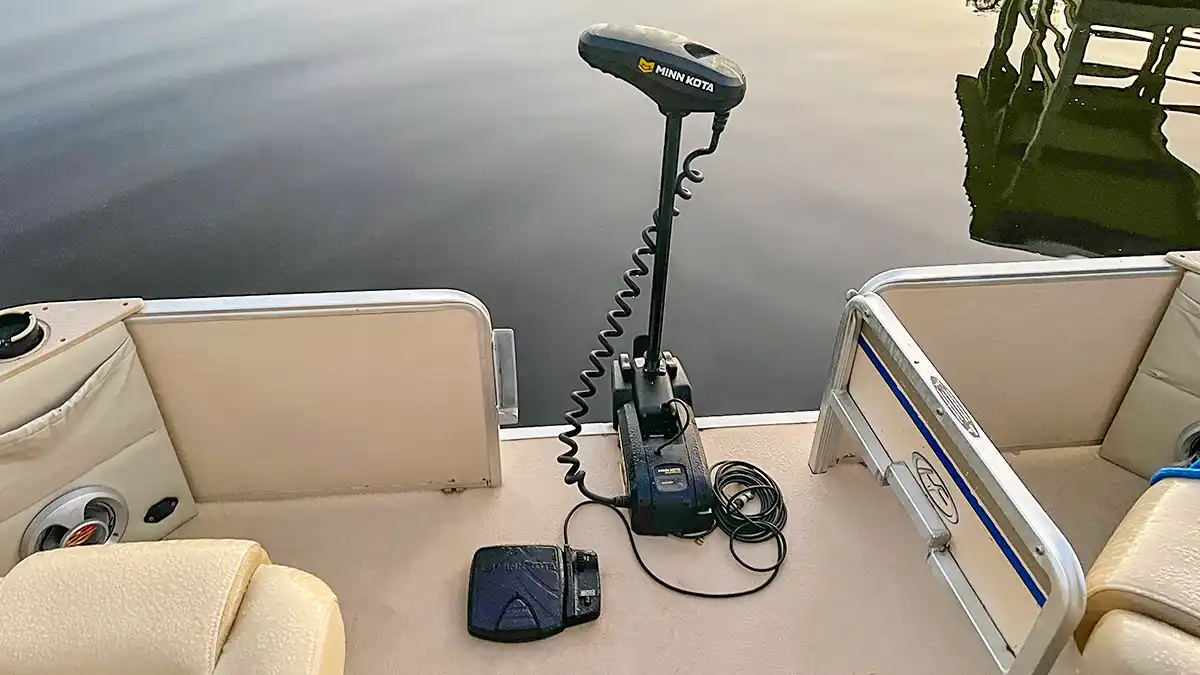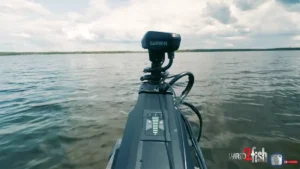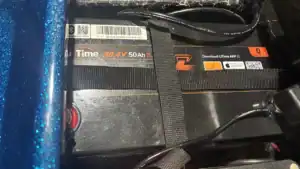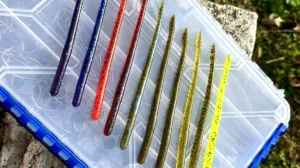I had the opportunity to test out the Minn Kota PowerDrive Trolling Motor for a week during a visit to my wife’s grandparents. They had recently installed this trolling motor on their pontoon boat. And, knowing I love to fish, they had the ride gassed up and ready for the wife and I to hop on for a week of fishing adventure which I of course used to get some work done on a product I’ve wanted to test for a while.
Admittedly, I haven’t fished from a pontoon much before. You can read more about that experience as a whole in our recent article What I Learned Fishing from a Pontoon Boat. Today though, let’s look at the trolling motor I used in particular, the Minn Kota PowerDrive Trolling Motor.
THE BASICS OF THE POWERDRIVE
The PowerDrive Pontoon Trolling Motor uses a foot-controlled pad and comes in two shaft lengths (48 inches and 52 inche) as well as two pound-thrust options (55 and 70). The 55-pound-thrust motor works off one 12-volt battery, the 70-pound-thrust motor requires two. The motor comes with mounting hardware, prop and bracket, as well as an 18-foot cord connecting the trolling motor to the foot pedal.
THE FOOT PEDAL
If you’ve used a foot-controlled, cable-steer trolling motor on a bass boat a good bit, this electric foot pedal will take a little getting used to. It works well, it simply works differently. With a “traditional” cable-steer foot pedal, pushing down on the front of the pedal with your toes turns the trolling motor to the right. Pushing down on the back with your heel turns the motor to the left. With this foot pedal, stepping on the right of the pedal turns right, and stepping on the left turns left.
This actually makes more sense, but it is different and takes a little re-education of your foot. The motor powers on by pressing the large button in the middle of the foot pedal, and there’s also the option to swap from the power from momentary to continuous by flipping a switch on the pedal. You can change the speed too using the traditional dial to the right of the foot pedal.
DEPLOYING AND STOWING
To deploy the trolling motor, press the large black lever (Deploy-Assist Lever) on top of the mounting bracket. It looks somewhat like the top half of a desk stapler. This disengages a large tooth that grips a collar on the shaft down near the lower unit of the trolling motor. There’s a little bit of a lift-assist, which helps get the trolling motor into the water. The shaft slides through a sleeve in the bracket until it reaches the adjustable collar on the shaft. You can turn a nob on the collar to set the trolling motor to where the lower unit will sit higher or lower in the water.
When stowing the trolling motor, there are two options. You can lift straight up on the head of the motor until the latch grabs hold of the collar near the lower unit. This allows you to stow the motor vertically while using the outboard to slowly move a short distance from spot to spot. Or you can stow it horizontally when you want to plane off or store the boat for an extended period of time. To stow the trolling motor horizontally, press the small lever on the back of the mounting bracket while simultaneously lifting the motor up and tilting it back until you can lay it down.
OTHER ATTRIBUTES
There’s a Push-to-Test Battery Meter, which you can use to see how much power you have left in your batteries. The composite shaft is nearly indestructible. And Minn Kota states on their site that their Digital Maximizer “provides up to 5 times longer run time on a single battery charge.” Depending on the choice between 55-pound thrust (12v) and 70-pound thrust (24v), the MSRP on this motor ranges from $649.99 to $1,119.99.

PERSONAL EXPERIENCE WITH THE POWERDRIVE
I was really pleased with this motor as a whole. I’ve owned a half dozen or so Minn Kota trolling motors over the years, and there’s a standard they’ve all held up to time after time. The PowerDrive Pontoon Trolling motor didn’t disappoint in that regard.
As I stated earlier, the functioning of the foot pedal took a little getting used to, having used foot-controlled trolling motors on bass boats for 30 years. But once I got the hang of it, it made since as to why Minn Kota designed it this way.
I did find that it was easier to just switch the motor over to continuous power as opposed to momentary, and keep the motor on low. The wind was blowing a decent amount during the first day of fishing, and just a little wind blows a pontoon around quite a bit. Leaving the motor running continuously on low helped me fight the wind without having to press the button over and over.
I also found that you can just reach out and turn the head of the motor by hand, without using the foot pedal. I don’t believe this hurt anything and it was a lot easier to just do this when I was standing close to the motor and trying to fight the wind.
The 18-foot long power cord though allows you to control the trolling motor from nearly anywhere in the boat. So sometimes I would slide the pedal to one side of the boat or the other, depending on what part of the lake I wanted to fish. You could even slide it all the way back to the captain’s seat if you’d like, and run the trolling motor from back there.
Deploying and stowing the motor can be a bit cumbersome. When deploying the motor, you want to guide it down with your hand instead of just turning it loose to drop freely. And when stowing it horizontally, there’s a bit of a dance between lifting it straight up, pressing the lever on the back of the bracket and then laying it down, all in one fluid motion. But this is something else that gets easier with a little practice.
And, as opposed to foot-controlled trolling motors on bass boats, if you hold down on the foot control of this trolling motor turning it to the right or to the left, the head will continue to spin in that direction 360 degrees over and over until the cable wraps tightly around the shaft. As long as you keep an eye on this, you can simply unwind the cord by spinning the head in the other direction.
All-in-all, a great motor. Easy to use, quiet, powerful, sturdy and mechanically intuitive. If you have a pontoon and would like to fish from it, this is a top-of-the-line trolling motor option for you.





















